Two parallel long smooth conducting rails separated by a distance l are connected by a movable conducting connector of mass m. Terminals of the rails are connected by the resistor R and the capacitor C as shown in figure. A uniform magnetic field B perpendicular to the plane of the rail is switched on. The connector is dragged by a constant force F. Find the speed of the connector as a function of time if the force F is applied at t=0. Also find the terminal velocity of the connector.
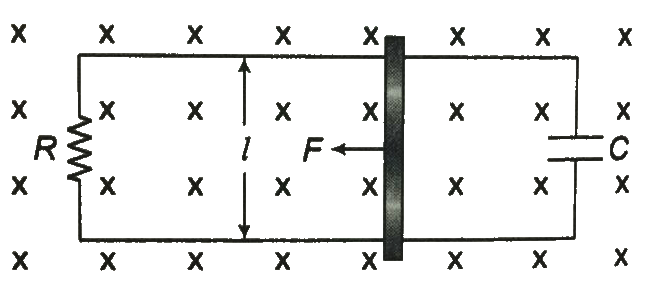
The correct Answer is:B
Let v be the veloicty of connector at some instant of time. Then,
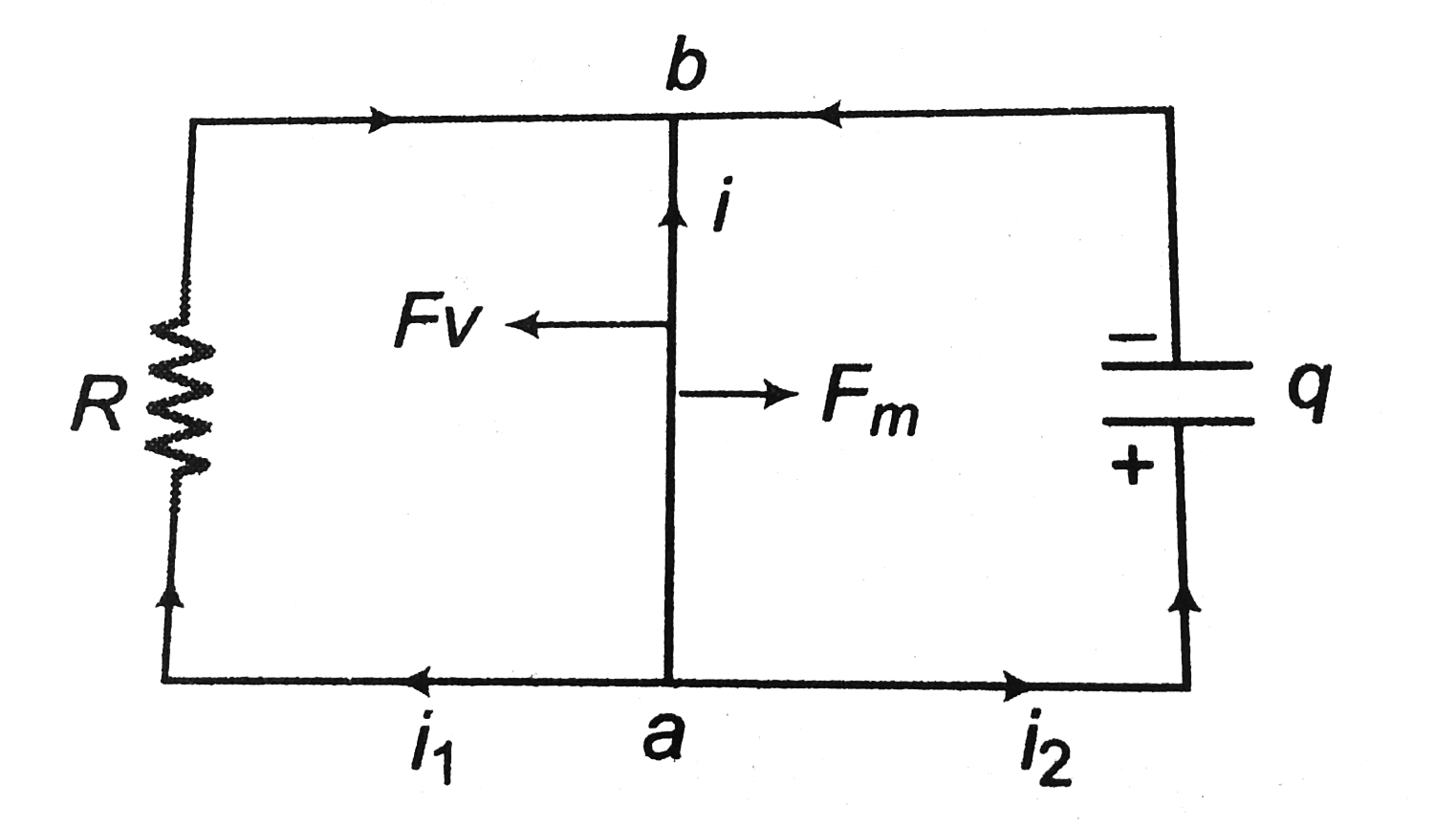
Vab=Bvl,i1=BvlR,q=C(Bvl)
∴i2=dqdt=CBIdvdt
Now, i=i1+i2=BvlR+CBIdvdt
Magnetic force Fm=ilB=B2l2R.v+B2l2C.dvdt
Further Fnet=F−Fm
or mdvdt=F−B2l2Rv−B2l2Cdvdt
∴∫v0dvF−B2l2Rv=∫10dtm+B2l2C
Integrating we get,
V=FRB2l2[1−1−(B2l2mR+RB2l2C)t]
Terminal velocity in this case is : vT=FRB2l2
Topper's Solved these Questions
- ELECTROMAGNETIC INDUCTIONBOOK - DC PANDEYCHAPTER - ELECTROMAGNETIC INDUCTIONEXERCISE - Check point
60 Videos
- ELECTROMAGNETIC INDUCTIONBOOK - DC PANDEYCHAPTER - ELECTROMAGNETIC INDUCTIONEXERCISE - Taking it together
119 Videos
- ELECTROMAGNETIC INDUCTIONBOOK - DC PANDEYCHAPTER - ELECTROMAGNETIC INDUCTIONEXERCISE - SUBJECTIVE TYPE
1 Videos
- CURRENT ELECTRICITYBOOK - DC PANDEYCHAPTER - CURRENT ELECTRICITYEXERCISE - Medical entrances gallery
97 Videos
- ELECTROMAGNETIC WAVESBOOK - DC PANDEYCHAPTER - ELECTROMAGNETIC WAVESEXERCISE - Sec C
22 Videos
Similar Questions
The magnetic flux linked with a vector area →A in a uniform magnetic field →B is
View SolutionL, C and R represent the physical quantities, inductance, capacitance and resistance respectively. The combination(s) which have the dimensions of frequency are
View SolutionIn the circuit diagram shown, initially there is no energy in the inductor and the capacitor, The switch is closed at t=0. Find the current I as a function of time if R=√L/C
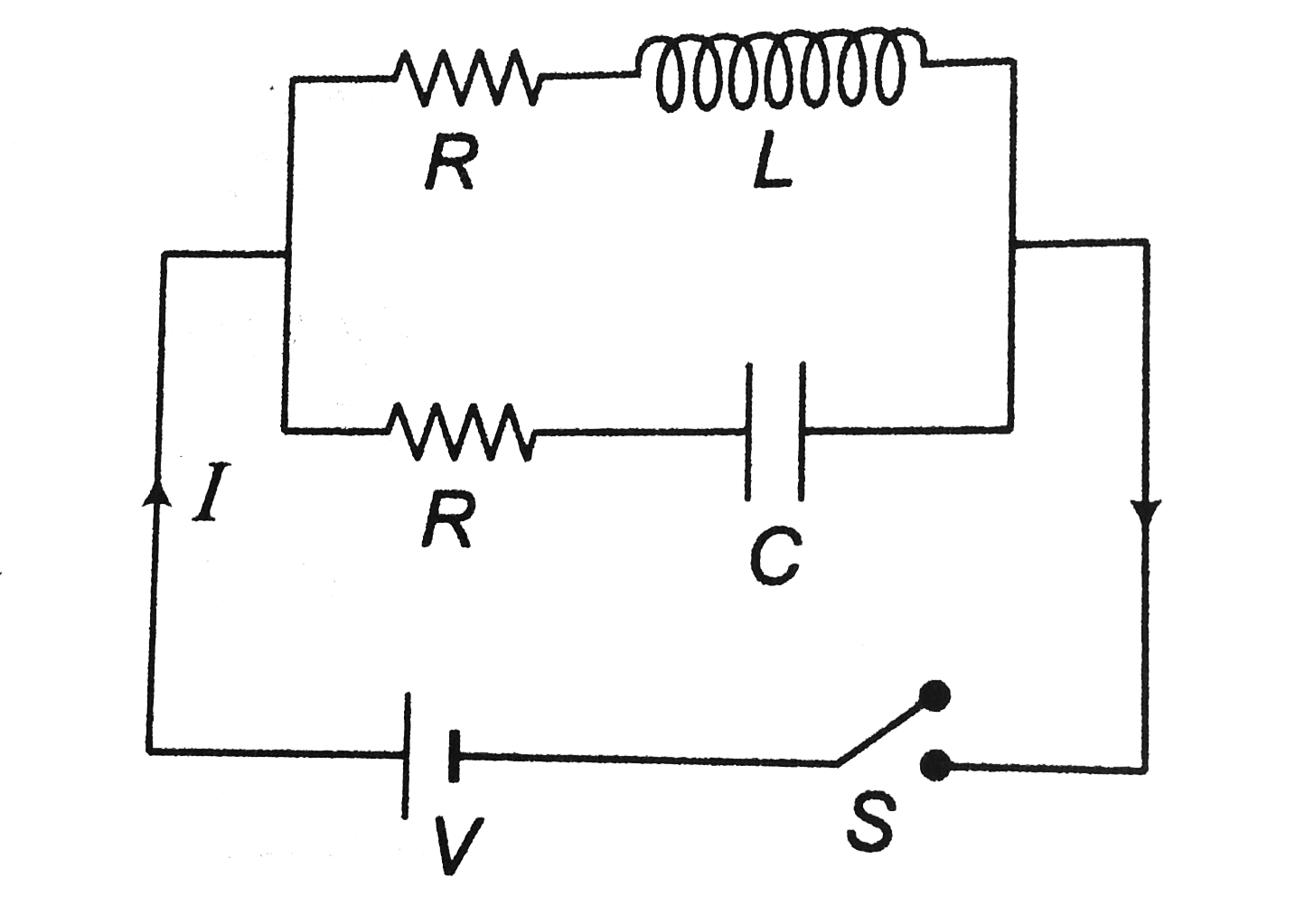
View SolutionA potentiometer wire is 100cm long hand a constant potential difference is maintained across it. Two cells are connected in series first to support one another and then in opposite direction. The balance points are obatined at 50cm and 10cm from the positive end of the wire in the two cases. The ratio of emfs is:
View SolutionOut of the following options which one can be used produce a propagating electromagnetic wave?
View SolutionA conducting rod of length is moved at constant velocity v0 on two parallel, conducting, smooth, fixed rails, that are placed in a uniform constant magnetic field B perpendicular to the plane for the rails as shown in Fig. A resistance R is connected between the two ends of the rails.
Then which of the following is/are correct:

View SolutionA rectangle loop with a sliding connector of length l=1.0m is situated in a uniform magnetic field B=2T perpendicular to the plane of loop. Resistance of connector is r=2Ω. Two resistance of 6Ω and 3Ω are connected as shown in figure. the external force required to keep the connector moving with a constant velocity v=2m/s is
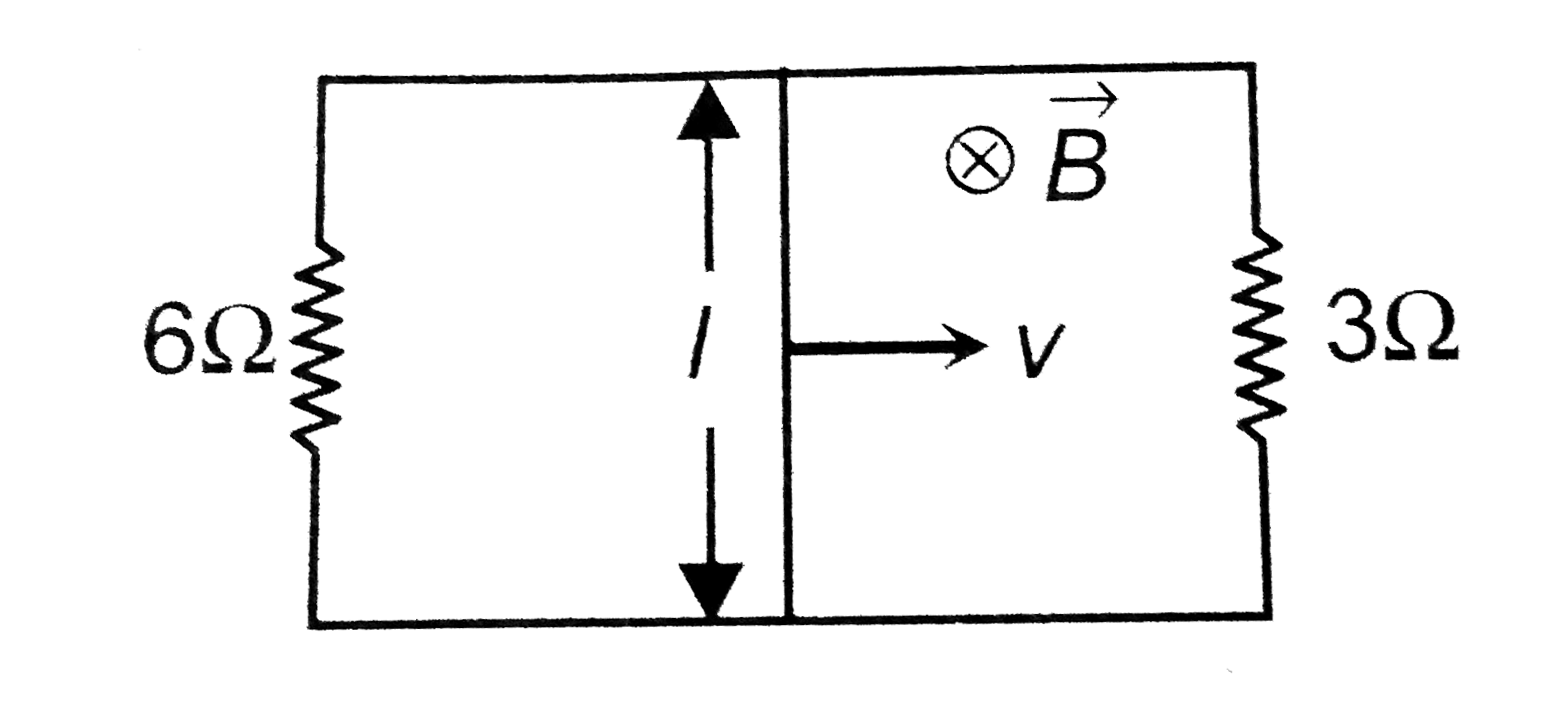
View SolutionA pair of parallel conducting rails lie at right angle to a uniform magnetic field of 2.0T as shown in the fig. two resistor 10Omega and 5Omega are to slide without friction along the rail. The distance between the conducting rails is 0.1m . Then
View SolutionFigure shows a wire sliding on two parallel, conducting rails placed at a separation L . A magnetic field B exists in a direction perpendicular to the plane of the rails. What force is necessary to keep the wire moving at a constant velocity V ?
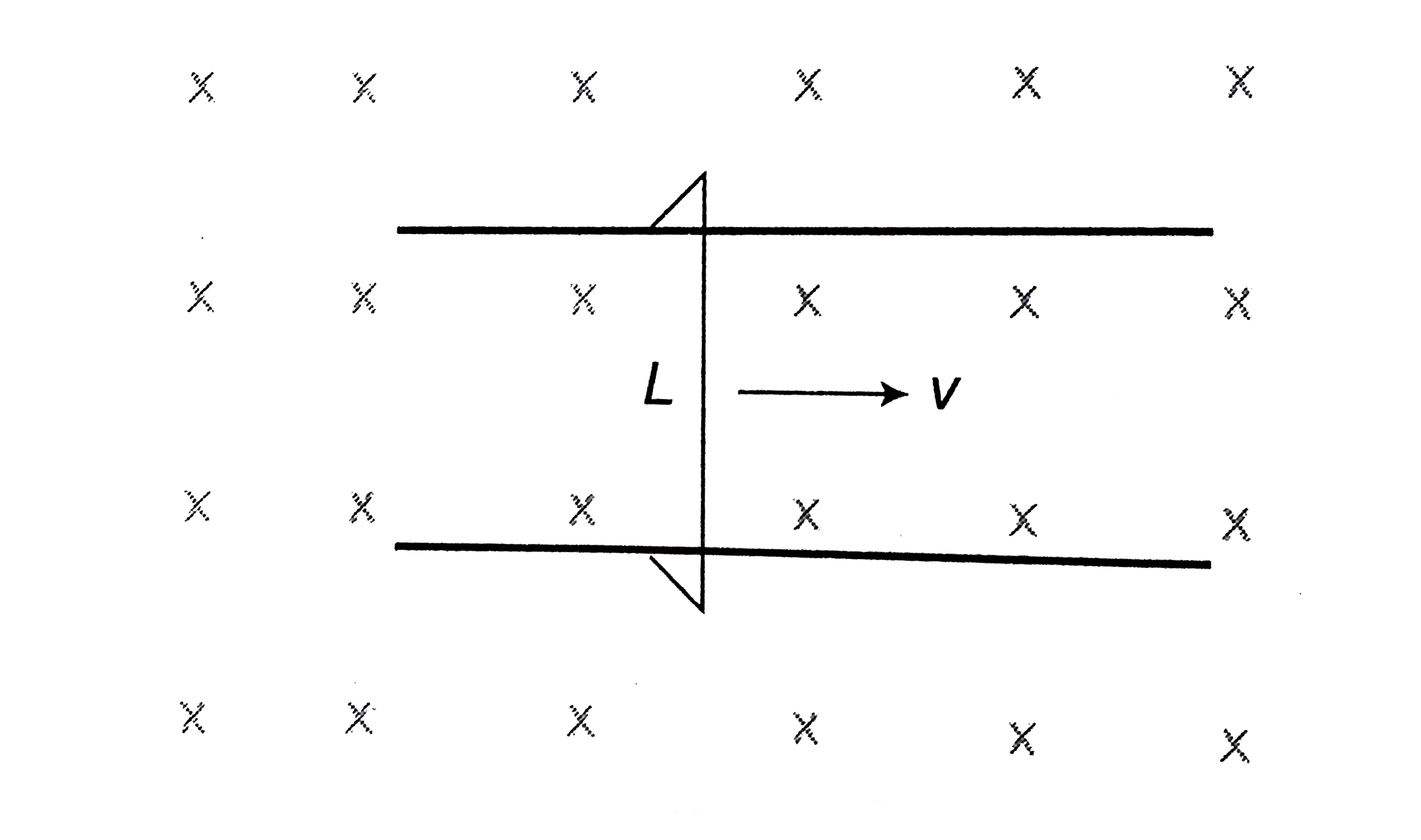
View SolutionTwo smooth horizontal parallel conducting rails are connected with a capacitor and a resistor at the two ends as shown. A uniform conducting rod PQ of mass 'm' and length 'l' is dragged with a constant horizontal force 'F'. The terminal velocity aquired by the conducting rod is
View SolutionTwo long rails are hporizontal and parallel to each. On one end, the rails are connected by a resistance R and on the other end a cpacitor of capacitance C is connected as shown in the figure . A connecter of mass m and length l can slide on the rails without friction. Uniform magnetic field B, perpendicular to he plane of hte gigure exists in space. A constant horizontal force F starts acting on hte connector. What is the acceleration of connector when its veleocity is 34 of its terminal velocity?

View SolutionTwo parallel long smooth conducting rails separated by a distance l=10cm are connected by a movable conducting connector of mass m=4mg.Terminals of the rails are connected by the resistor R=2Ω & the capacitor C=1μF as shown.A uniform magnetic field B=20T perpendicular to the plane of the rails is swiched on.The connector is dragged by a constant force F=10N.The speed of the connector as function of time if the force F is applied at t=0 is equal to v−5(1−e−x×104×tm/s).Find the value of x.
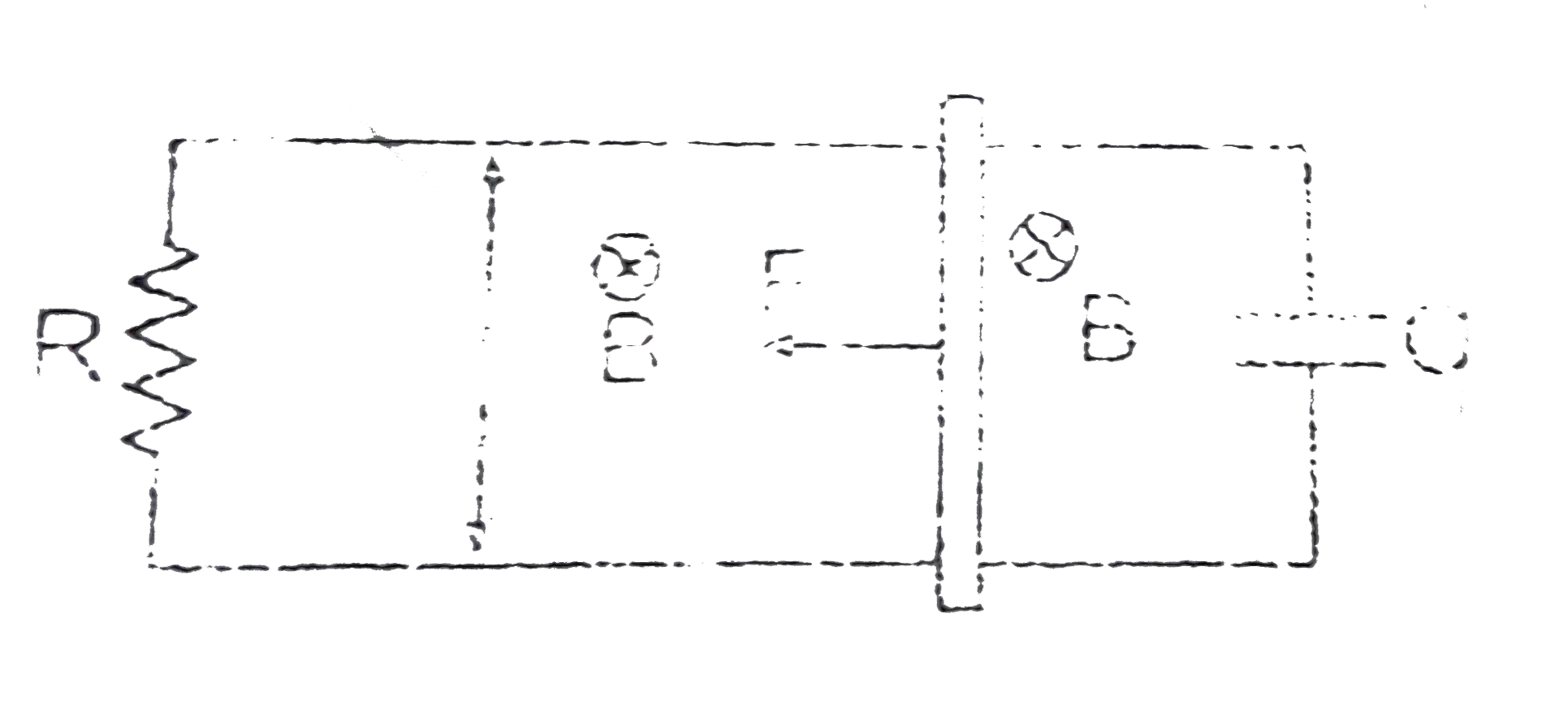
View SolutionTwo parallel long smooth conducting rails separated by a distance l=10cm are connected by a movable conducting connector of mass m = 4mg. Terminal of the rails are connected by the resistor R=2Ω & the capacitor C=1μF as shown. A uniform magnetic field B=20T perpendicular to the plane of the rails is switched on. The connector is dragged by a constant force F=10 N. The speed of the connector as function of time if the force F is applied at t=0 is equal to v=5(1−e−x×104×t)m/s. Find the value of x.
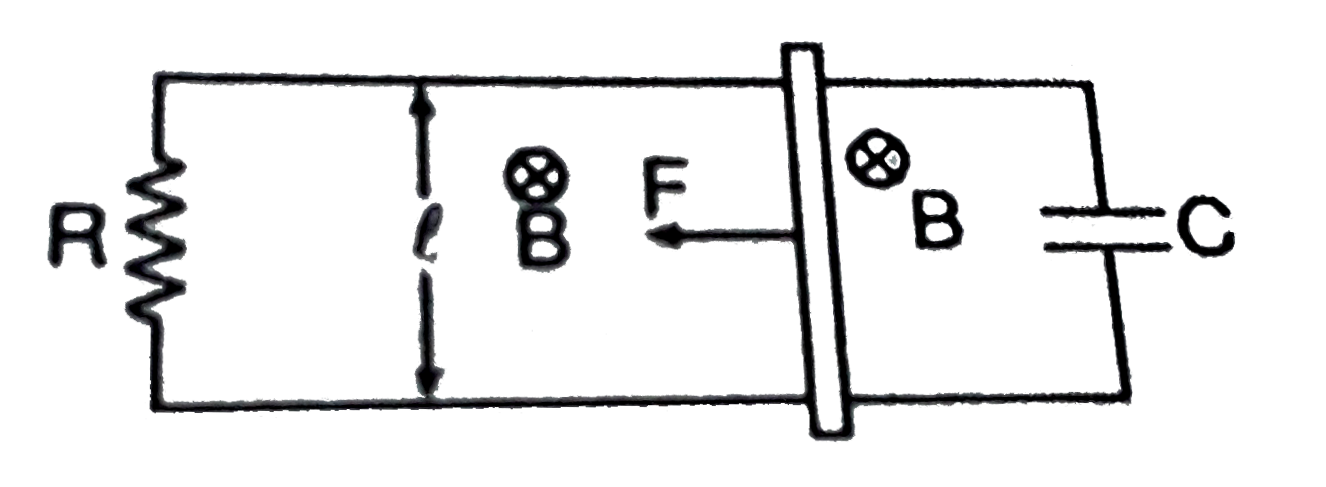
View SolutionIn the network shown, the connector of mass m, length l and negligible resistance can smoothly side along two fixed parallel rails. The capacitor is initially uncharged and ET a uniform magnetic field B exists in the region directed into the plane of paper. If the switch S is closed at t=0 then the charge on the capacitor after long time is
View SolutionTwo parallel long smooth conducting rails separated by a distance l are connected by a movable conducting connector of mass m. Terminals of the rails are connected by the resistor R and the capacitor C as shown in figure. A uniform magnetic field B perpendicular to the plane of the rail is switched on. The connector is dragged by a constant force F. Find the speed of the connector as a function of time if the force F is applied at t=0. Also find the terminal velocity of the connector.

View Solution
